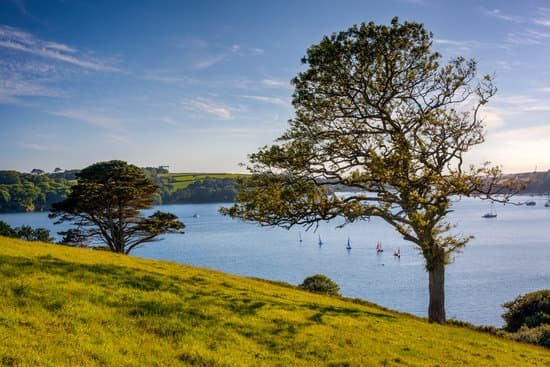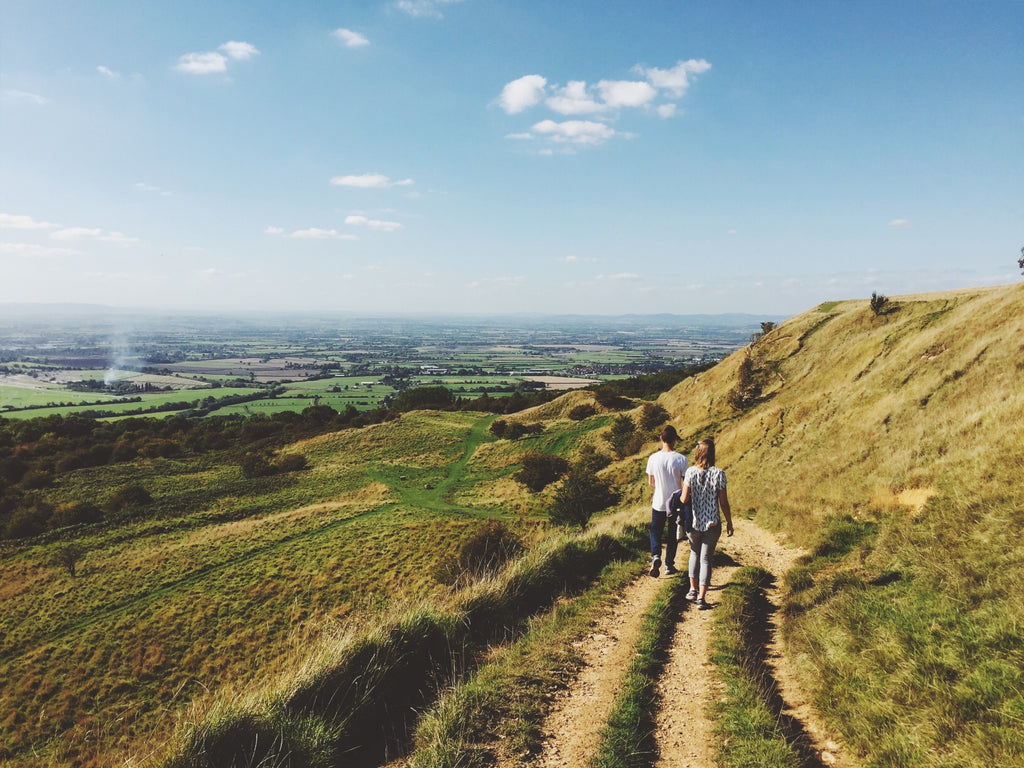Waving daffodils, bluebell woods and muddy tracks … Time to stride out into the colourful countryside
1. Helford River, Cornwall
Britain’s microclimates reliably fast-forward the spring season. Sunny, sheltered Helford in Cornwall rarely gets snow or freezing temperatures, allowing early-spring flowers – including daffodils, white-flowered ramsones and primroses – a chance to get a head start on the rest of Britain.

Stopping at Falmouth allows for the gathering of picnic provisions, after which it’s an easy 2½-mile walk from Helford to Frenchman’s Creek. Kestle Barton en route has a picnic area and usually an honesty box for drinks and snacks.
2. Rigsby’s Wood, Lincolnshire
On the edge of Lincolnshire’s gentle green wolds near Alford, spring sees these woods become an absurdly beautiful carpet of bluebells.

Covering 15 hectares, it’s a hidden joy reached by a small track from the Haugh Road, with seriously ancient trees, especially in the Pingle area, wood anemone and early-purple orchids to explore, plus trees that harbour tawny owls, great spotted woodpeckers and warblers. Gentle and great for families.
3. Hackfall Wood, North Yorkshire
Spring takes this 18th-century garden near the River Ure from its winter deep gothic persona to a remarkably joyful showcase.

Thanks to a series of eccentric owners, Hackwall, which covers 73 hectares, is stuffed with grottoes and fanciful ruins. Surprise was the aim of the original owners – paths lead to 40ft waterfalls, mock temples (and a cottage now let by the Landmark Trust). Restored and run by the Woodland Trust, after the first snowdrops appear, a cavalcade of springness will start with crocuses, wild garlic and then bluebells.
4. Ankerwycke, Surrey
An short easy walk that’s ideal for children. On the opposite side of the Thames to Magna Carta-minded Runnymede, these ancient woods are so sheltered that a 2,500-year-old yew, one of Britain’s oldest trees, is still going strong.
While Victorians later accessorized the ruins of a Benedictine priory with carpets of snowdrops. Explore the meadows around Ankerwycke and there are riverbank daffodils, blackthorn blossom, red campion and bluebells, swans and boats.
5. Dolmelynllyn Estate, Gwynned
There’s a time and a place for the more exposed parts of Snowdonia – ideally when there isn’t a strong wind. If the early spring breeze is a bit overenthusiastic, heading into the woods makes more sense.
As the snows above melt, the waterfalls of the National Trust Dolmelynllyn estate are at their most dramatic, the surrounding lichen is glorious and the spring bulbs start emerging. Look out for the remains of a goldmine and enjoy the resiny scent of conifers.
6. Cambo, Fife
Near St Andrews and easy to reach by bus, the 28 hectares of Cambo has national collection status for its snowdrops, with more than 350 varieties, including late-flowering ones, planted by generations of the Erskine family. The garden cafe has snacks and hot drinks in usual times; if you’re feeling energetic, after going through the woodland trails (some are suitable for the mobility impaired), you can carry on the coastal trail to either St Andrews or Crail, both with harbourside fish and chips.
7. Derwentwater, Lake District
The days are getting longer, but when the light is still low in the sky, walking by water offers both spiritual and actual reflection.
A 10-mile loop through woodlands and shoreline can be started anywhere, although Keswick has public transport, parking spots and places for picnic provisions (and as restrictions lift, there are cafes and hotels that welcome walkers for meals en route). Not feeling so energetic? Buttermere offers a smaller circuit at about five miles.

8. Sir Harold Hillier Gardens, Hampshire
These gardens near Romsey are less a walk and more a horticulturist’s compelling argument that early spring isn’t dependent on daffodils and crocuses.
With more than 73 hectares (180 acres) to explore on different trails, other pleasures include scarlet-stemmed willow trees, cyclamen tubers and hellebores, while a collection of witch hazel provides bright starbursts of yellow, while spring romance, a winter honeysuckle, is already adding scent to the mix. By April, an avenue of magnolias and a heady display of camellias start to burst forth.
9. The Daffodil Way, Gloucestershire
This nine-mile circular walk between Dymock and Kempsley Green is delightful any time of year, but in spring it lives up to its name. This part of Gloucestershire was originally known as the Golden Triangle thanks to the wild daffodils that still thrive here, smaller than modern varieties, but spellbinding in profusion.

Modern life intrudes a little when you have to walk under the M50, but otherwise, you’ll see them blanketing woodland, churchyards and riverbanks and – with luck – augmented with young lambs in nearby fields. You’ll need good walking boots because the paths can get very muddy.
10. Cressbrook, Peak District
An appetite-sharpening three-hour circuit in the Peak District that concentrates on the sheltered dales near Bakewell. It starts at Cressbrook Mill and loops around through the Ravensdale valley.
Halfway through you’ll reach Litton where the community shop should be open for refreshments and the pub is doing takeaways until it can open properly. Afterwards the path, complete with cowslips, orchids and wild garlic and former cotton mills, heads to the spectacular millpond of the delightfully named Water-cum-Jolly.
From TheGuardian
